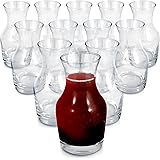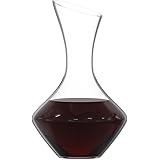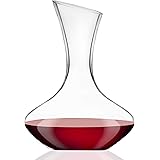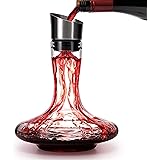The world of wine extends far beyond the well-trodden vineyards of Bordeaux or Napa Valley. While the video above offers a compelling glimpse into some of the globe’s most captivating, yet often overlooked, viticultural regions, this article delves deeper into why these underrated wine regions represent the future of discerning palates and adventurous spirits. These are the hidden gems where innovation meets tradition, and unique terroirs yield wines of extraordinary character and value. Exploring these emerging wine destinations can truly transform one’s understanding of global viticulture.
For connoisseurs and enthusiasts alike, discovering a new favorite vintage from an unexpected locale is a singular pleasure. These regions, often characterized by passionate, independent winemakers, are crafting expressions that challenge established norms and offer a refreshing departure from the conventional. They provide not just excellent wines, but also compelling narratives of resilience, innovation, and a deep connection to the land. Prepare to expand your oenological horizons with this expert guide to truly distinctive viticultural landscapes.
1. Valle de Guadalupe, Baja California, Mexico: The Frontier of Mexican Viticulture
Located just south of the U.S. border in Baja California, Mexico, Valle de Guadalupe is unequivocally the “Wild West of winemaking,” as highlighted in the video. This dynamic region, shaped by a Mediterranean climate, benefits from hot, dry days and cool, Pacific-influenced nights, a diurnal shift that promotes optimal grape maturation. Its unique granite and alluvial soils, combined with low rainfall, stress the vines, concentrating flavors and contributing to the distinctive minerality of its wines. Winemakers here embrace a bold, experimental approach, frequently blending Old World varietals with New World techniques.
While the video mentions robust Cabernet Sauvignon, Merlot, and Tempranillo, the true brilliance of Valle de Guadalupe often shines through in its unexpected successes with Nebbiolo, Zinfandel, and Grenache. The Nebbiolo, in particular, has garnered international acclaim, showcasing a softer, more approachable profile than its Italian counterparts, yet retaining its characteristic structure. The region’s innovative spirit extends to its culinary scene, with many wineries featuring exceptional farm-to-table restaurants that perfectly complement the local vintages. This integration of gastronomy and viticulture fosters a holistic wine experience that emphasizes authenticity and regional expression.
2. Finger Lakes, New York, USA: Cool Climate Elegance
The Finger Lakes region of New York stands as a testament to the power of a specific terroir, thriving amidst a cool climate often underestimated for its viticultural potential. As the video notes, Dr. Konstantin Frank Vinifera Wine Cellars pioneered the successful cultivation of European vinifera grapes here in the 1950s, proving that world-class wines could emerge from American soil. This historical achievement laid the groundwork for a flourishing industry deeply rooted in high-quality cool-climate viticulture. The deep glacial lakes surrounding the vineyards regulate temperatures, preventing harsh frosts and extending the growing season, which is crucial for aromatic varietals.
Riesling is undeniably the star here, celebrated for its crisp acidity, aromatic complexity, and remarkable versatility, ranging from bone-dry to lusciously sweet ice wines. Tasting notes often reveal vibrant green apple, pear, and distinct minerality, sometimes accented by a hint of honey or petrol as the wines age. Beyond Riesling, the region also excels with other cool-climate grapes such as Gewürztraminer, Pinot Noir, and Chardonnay, which often express a lean, focused elegance. The commitment to crafting high-quality, regionally expressive wines, coupled with stunning natural beauty, establishes the Finger Lakes as a premier destination for nuanced cool-climate wines.
3. Serra Gaúcha, Brazil: A Taste of Italian Heritage
Brazil might not immediately spring to mind as a premier wine-producing nation, yet Serra Gaúcha in the southern state of Rio Grande do Sul presents a vibrant counter-narrative, shaped profoundly by its 19th-century Italian immigrant heritage. These early settlers brought not just their language and culture, but also their deep-seated winemaking traditions, transforming the mountainous terrain into a burgeoning viticultural landscape. The region’s subtropical climate, characterized by warm summers and mild winters, presents unique challenges that local vintners have ingeniously overcome, often utilizing specific clonal selections and canopy management techniques adapted to the humidity.
Serra Gaúcha is particularly renowned for its sparkling wines, often produced using the traditional method (Metodo Tradicional), rivaling some of the finest Champagnes with their fine perlage and complex autolytic notes. Beyond effervescence, the region also produces surprisingly bold reds, primarily from Merlot, Cabernet Franc, and Tannat, alongside crisp whites like Chardonnay and Moscato. The viticultural landscape is a mosaic of small, family-owned properties coexisting with larger, technologically advanced wineries, all contributing to a diverse and evolving wine profile. Experiencing Serra Gaúcha wine is to connect with a powerful narrative of cultural transplantation and viticultural adaptation.
4. Etyek-Buda, Hungary: Historic Cellars, Modern Wines
Hungary’s winemaking legacy spans centuries, and Etyek-Buda, nestled close to the capital, Budapest, perfectly encapsulates this blend of historical depth and contemporary innovation. The region’s distinct terroir, marked by limestone and loess soils, combined with a continental climate, provides ideal conditions for crafting elegant white wines. As noted in the video, Etyek-Buda shines with its crisp and refreshing Sauvignon Blanc and Chardonnay, which often display bright acidity and nuanced mineral undertones. These whites are frequently fermented in stainless steel to preserve their aromatic purity, showcasing the cool climate’s influence.
Beyond its acclaimed whites, Etyek-Buda also produces respectable Pinot Noir, exhibiting red berry fruit, earthy notes, and a silky texture. However, the region’s most captivating feature is undoubtedly its labyrinthine network of underground wine cellars, some of which stretch for miles. These ancient, temperature-controlled tunnels offer perfect conditions for aging, contributing to the development of complex secondary aromas and flavors in the wines. The annual Etyek-Buda Wine Festival serves as a vibrant celebration of local wines, food, and culture, drawing visitors into the heart of Hungary’s dynamic viticultural identity and allowing them to explore these fascinating subterranean vaults.
5. Ningxia, China: A Global Viticultural Contender
The Ningxia Hui Autonomous Region in China stands as a beacon of modern winemaking, where “ancient traditions meet modern winemaking to create something truly special.” Situated in the foothills of the Helan Mountains, this region boasts a unique desert climate characterized by abundant sunshine hours, significant diurnal temperature shifts, and mineral-rich alluvial soils. These challenging yet ultimately beneficial conditions are meticulously managed by passionate winemakers, who combine traditional Chinese viticultural knowledge with cutting-edge enological technology. The Helan Mountains act as a natural barrier, protecting vineyards from harsh desert winds and contributing to a microclimate conducive to premium grape cultivation.
Ningxia has rapidly gained international recognition, particularly for its bold Cabernet Sauvignon, which frequently draws comparisons to top Bordeaux expressions due to its structure, dark fruit intensity, and elegant tannins. Elegant Pinot Noir and aromatic whites like Chardonnay and Riesling also thrive, displaying remarkable purity and balance. The commitment to sustainable practices is a hallmark of Ningxia’s burgeoning industry, with many vineyards employing drip irrigation and organic farming methods to mitigate environmental impact. Ningxia is not just an emerging player; it is poised to become a significant force in the global wine arena, continually impressing critics with its refined and distinctive offerings.
6. Tasmania, Australia: Cool Climate Pinots and Bubbles
Tasmania, Australia’s island state, is a land of “rugged beauty, pristine wilderness,” and an increasingly celebrated cool-climate viticulture. Its geographical isolation and maritime climate, influenced by the Southern Ocean, provide consistently mild temperatures, long daylight hours during the growing season, and significant rainfall, creating ideal conditions for aromatic varietals. The island’s diverse soils, ranging from volcanic to ancient sedimentary, further contribute to the complexity of its wines. Tasmania’s relative undiscovery in the global wine scene offers enthusiasts the unique opportunity to explore high-quality wines at exceptional value.
The island has rightfully earned its reputation for exceptional cool-climate Pinot Noir, which exhibits elegant red berry fruit, vibrant acidity, and often subtle earthy or spice notes, reflecting its unique terroir. Tasmania is also a powerhouse for world-class sparkling wines, benefiting from the same conditions that favor Pinot Noir and Chardonnay, the two primary grapes used in traditional method sparkling production. These wines display impressive finesse, complex autolytic characters, and a persistent mousse. Additionally, crisp Chardonnay and aromatic Sauvignon Blanc demonstrate the versatility of Tasmania’s vineyards, offering a diverse portfolio of compelling and distinctive wines.
7. Bekaa Valley, Lebanon: A Legacy Etched in Time
The Bekaa Valley in Lebanon holds a winemaking tradition that astonishingly dates back over 6,000 years, establishing it as one of the oldest wine-producing regions globally. This ancient legacy is not merely historical curiosity; it’s a living testament to viticultural resilience and adaptation. Nestled between the towering Lebanon and Anti-Lebanon mountain ranges, the valley benefits from a distinctive terroir: warm, sunny days are tempered by cool, high-altitude nights, while fertile alluvial soils provide ample nourishment for the vines. This significant diurnal temperature variation is crucial for developing both sugar content and phenolic ripeness in the grapes.
Winemakers in the Bekaa Valley proudly carry on this profound heritage, often employing traditional techniques passed down through generations alongside modern innovations. The region is particularly acclaimed for its robust red blends, frequently featuring a captivating assemblage of Cinsault, Carignan, Cabernet Sauvignon, and Mourvèdre. These wines are known for their intensity, complexity, and remarkable aging potential, often displaying notes of dark fruit, spice, and savory herbs. Drinking a wine from the Bekaa Valley is truly “like tasting history in a glass,” an experience that connects one to millennia of viticultural expertise and the enduring spirit of Lebanese winemaking.
8. Swartland, South Africa: The Old Vine Revival
South Africa’s Swartland region has rapidly become a favorite among wine lovers, representing a dynamic movement focused on producing high-quality wines that “over-deliver on quality without the high price tag.” This rugged, dryland farming area, located north of Cape Town, is characterized by its ancient bush vines, many of which are 30-50 years old, some even older, producing low yields of intensely flavored fruit. The region’s hot, dry climate, combined with diverse soils ranging from granite to shale, forces the vines to struggle, resulting in wines of immense concentration and complexity. Winemakers here are deeply committed to minimal intervention winemaking, letting the unique terroir speak for itself.
Swartland is perhaps best known for its exceptional Chenin Blanc, often sourced from these old bush vines, yielding wines with profound texture, minerality, and intricate layers of fruit and savory notes. Syrah (Shiraz) is another flagship varietal, known for its powerful yet elegant expressions, often exhibiting dark fruit, pepper, and gamey characteristics. Grenache, Cinsault, and Carignan also thrive, contributing to an increasing number of captivating red blends that showcase the region’s commitment to Rhône-style wines. The ethos of small, independent winemakers passionately expressing their distinctive vineyards defines the Swartland’s exciting viticultural landscape, making it a hotbed for innovation and value.
9. Kaohsiung, Taiwan: Tropical Winemaking Reinvented
Kaohsiung, Taiwan, challenges traditional notions of where world-class wines can be produced, proving that “you don’t need centuries of winemaking tradition to produce world-class wines.” This tropical region, usually associated with high humidity and challenging viticultural conditions, is home to a new generation of innovative winemakers. They are pushing the boundaries of what’s possible in a tropical climate through meticulous vineyard management, advanced canopy control, and precise enological techniques. The intense heat and humidity necessitate careful site selection, often at higher altitudes, and the use of disease-resistant clones.
These pioneering vintners are crafting aromatic whites like Chenin Blanc and Viognier, which express tropical fruit notes balanced by refreshing acidity, a testament to their skilled adaptation to the climate. Full-bodied reds such as Shiraz and Cabernet Sauvignon also emerge, often with a “distinct Tai twist” that might include unique spice notes or a softer tannin structure. The focus on sustainable practices and environmentally friendly viticulture is paramount, reflecting a forward-thinking approach to winemaking in a sensitive ecosystem. Kaohsiung represents the cutting edge of tropical viticulture, offering a fascinating glimpse into the future of wine production in unexpected locales.
10. Texas Hill Country, USA: The Bold Spirit of Lone Star Wines
Returning to the USA, the Texas Hill Country has rapidly gained recognition for its distinctive wines, proving that the Lone Star State offers more than just barbecue and music. This vast appellation, stretching over nine million acres, is defined by its dramatic landscape of rolling hills, ancient limestone formations, and a truly continental climate. The combination of hot days, significantly cooler nights, and limestone-rich soil creates wines with a distinct minerality and a bold, individual character. The diurnal temperature variation is essential for preserving acidity and developing aromatic complexity in the grapes, even amidst the Texan heat.
Texas Hill Country is a diverse viticultural region, home to everything from small, family-run operations to larger, established vineyards, all contributing to a vibrant wine scene. While the video mentions the wines are “just as big and bold” as other Texan staples, the region excels with Mediterranean varietals perfectly suited to its climate. Tempranillo and Sangiovese thrive here, producing reds with structure, ripe fruit, and savory nuances. Mourvèdre and Viognier also find a welcoming home, yielding robust reds and aromatic whites, respectively. The distinct minerality imparted by the limestone soils is a signature characteristic, adding complexity and depth. The growing popularity of the Texas Hill Country Wine Trail underscores the region’s rising prominence, offering a unique taste of Texas’s burgeoning wine identity and a compelling reason to explore these underrated wine regions.







